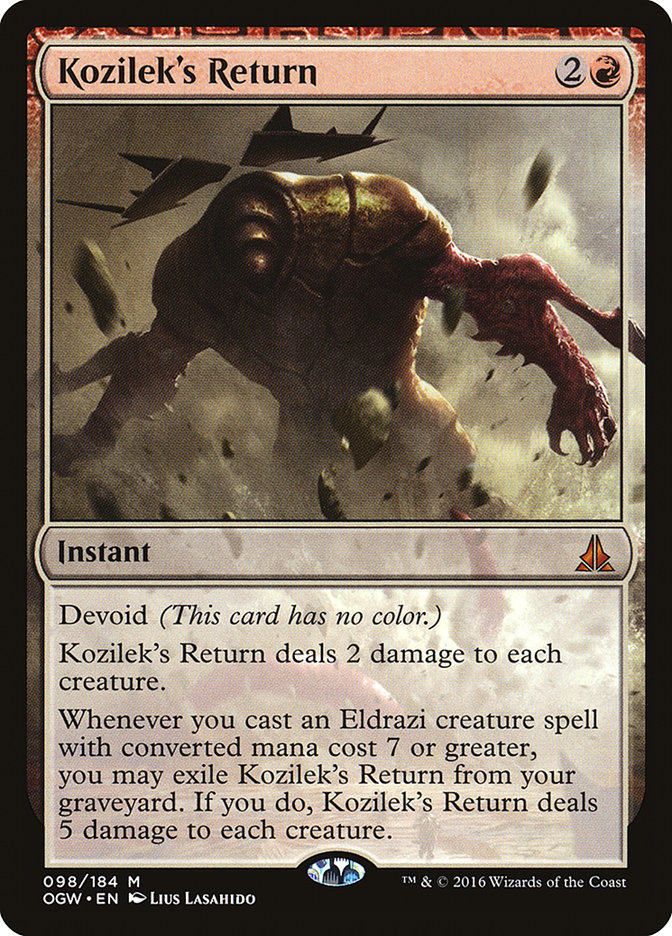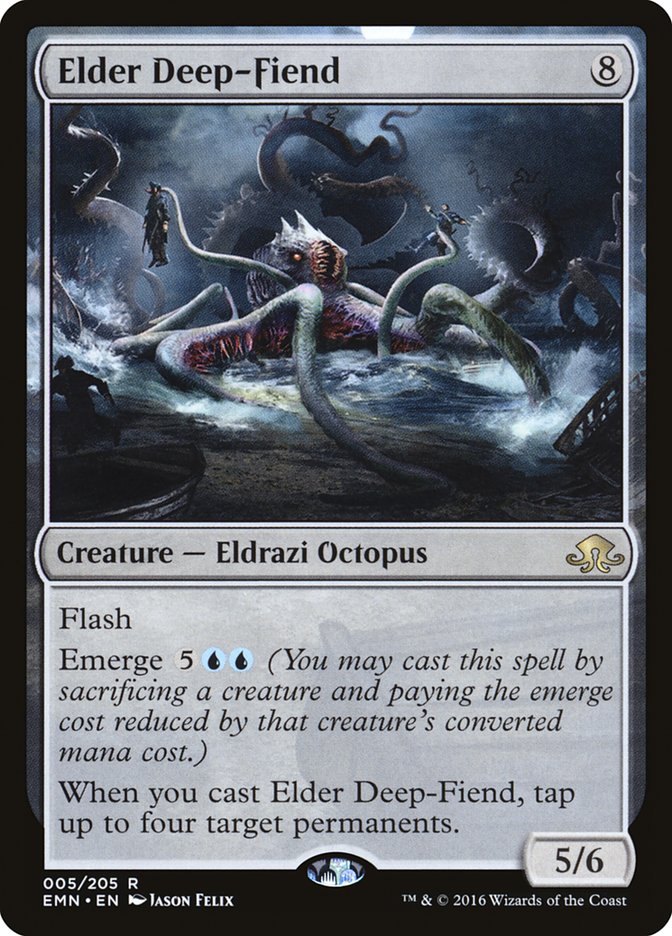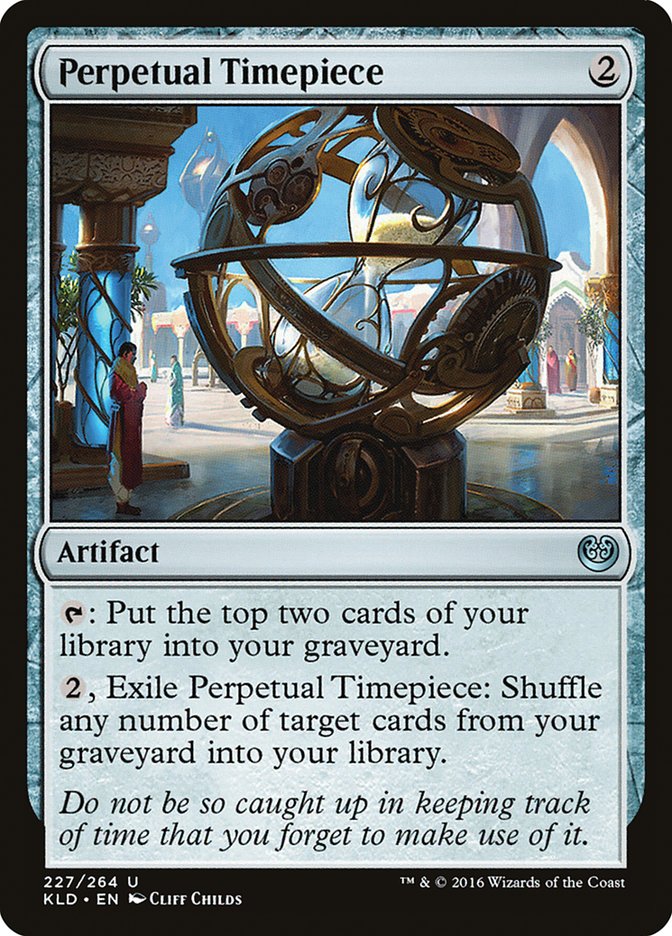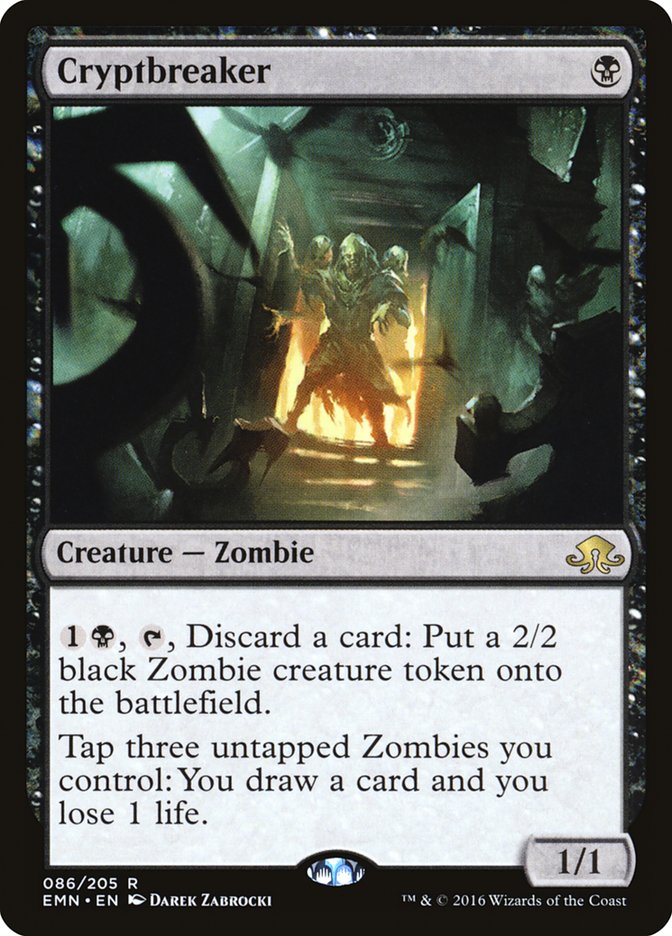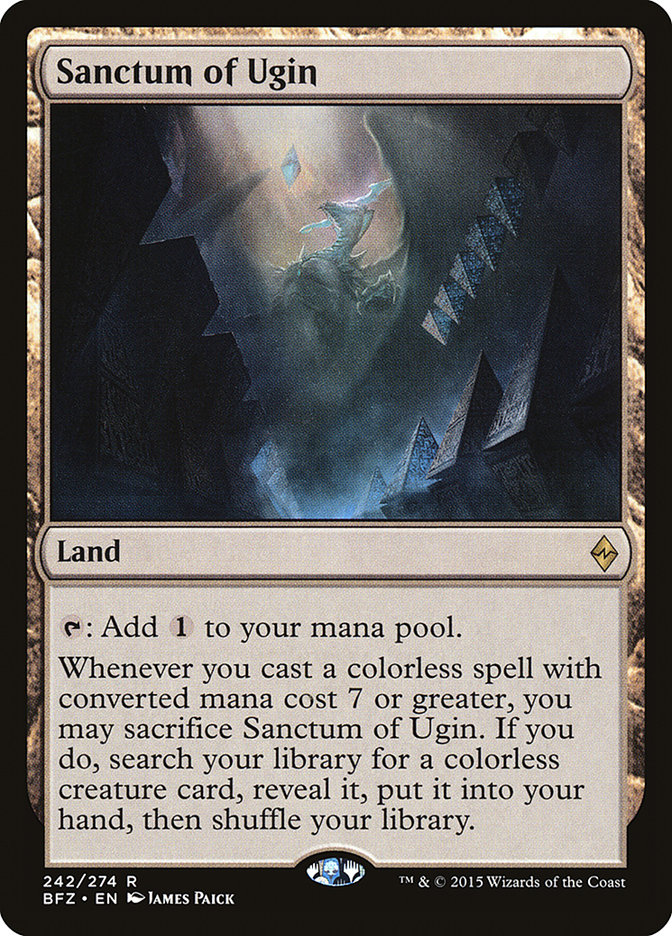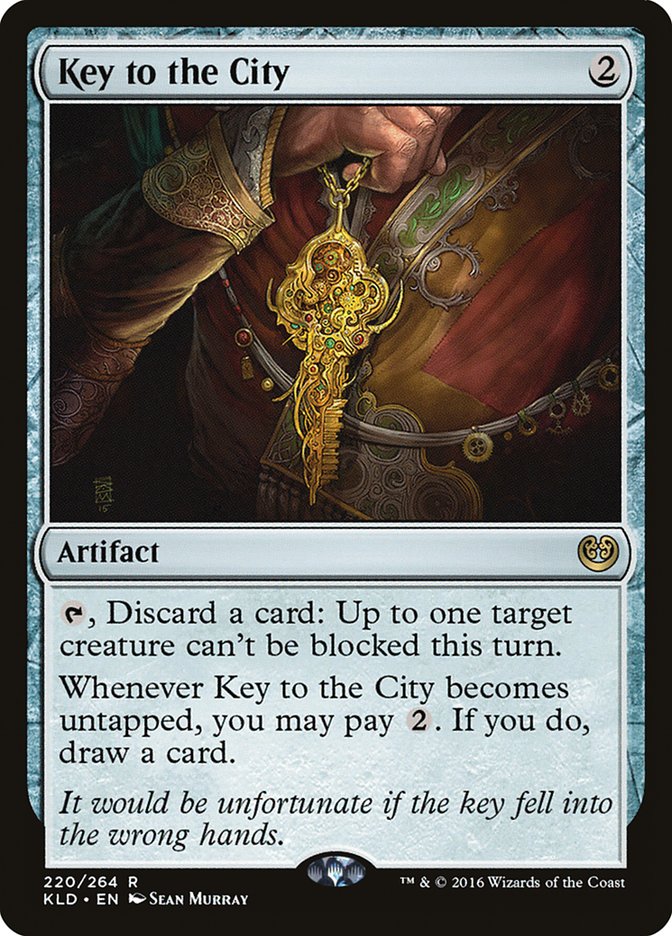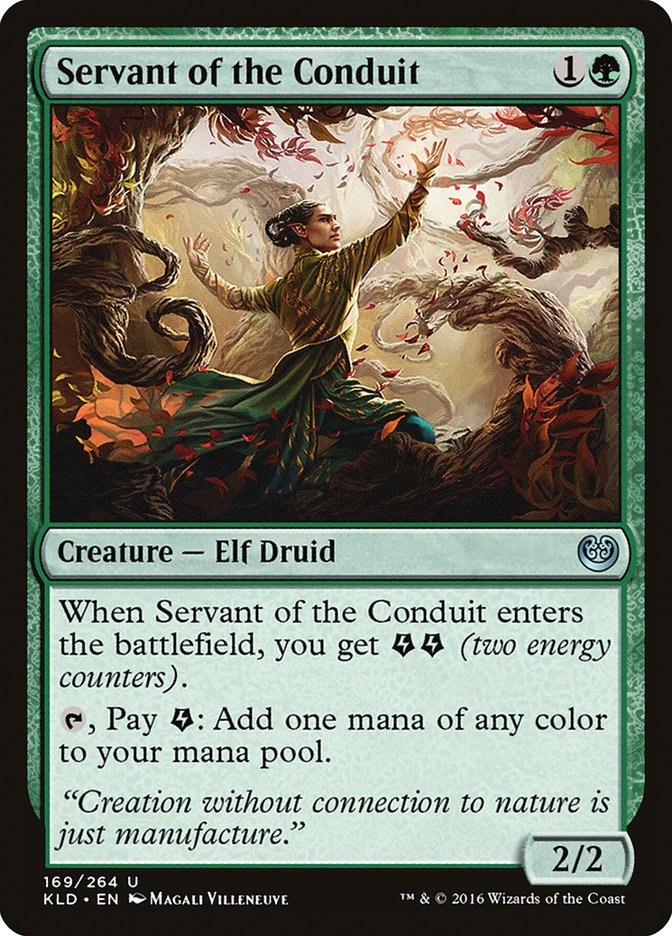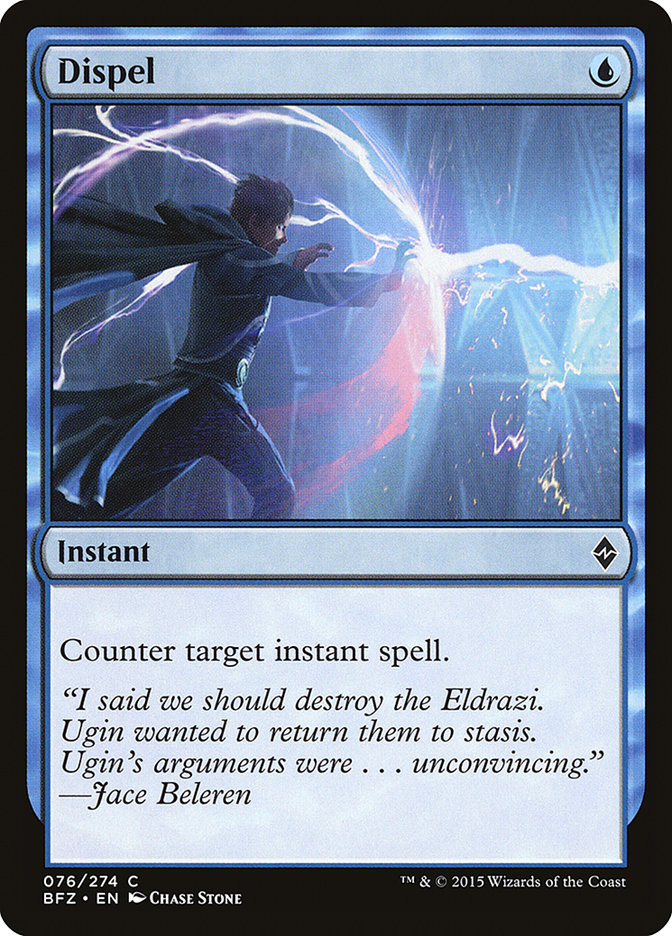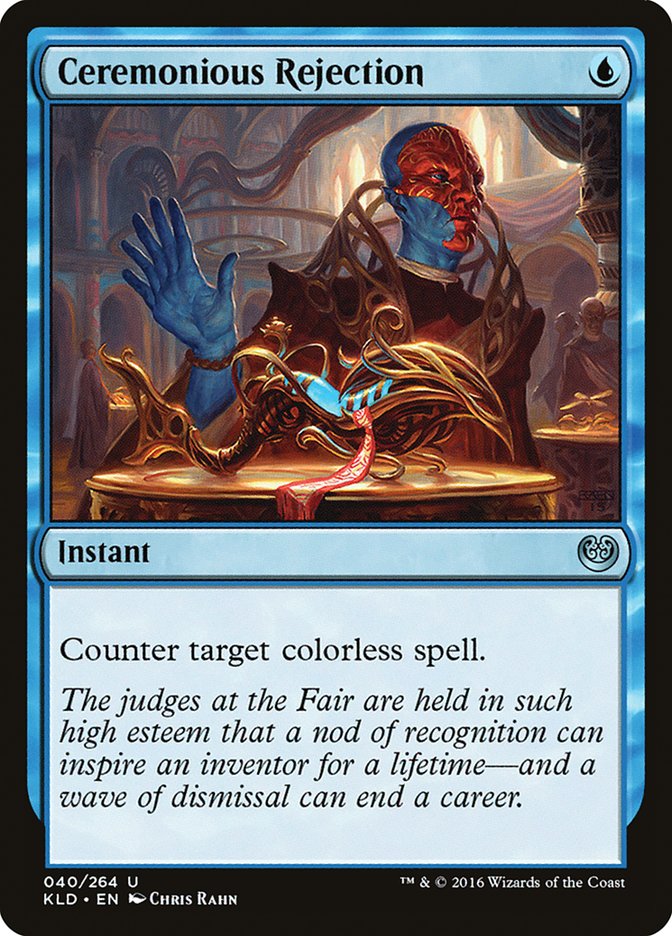Of note: #SCGINDY Top 8 contained 32 copies of Smuggler’s Copter.
— nick miller (@Nickthos) October 2, 2016
That’s a big deal, regardless of where you stand on the subject. I don’t know if we’ve had that kind of a showing from a card since Stoneforge Mystic was in Standard, and even then usually a few other decks slipped into the mix.
It’s Thursday already, which means there have been three other days’ worth of people talking about Smuggler’s Copter and how insanely good it is. The bummer is that I’m sure I won’t be the last to tell you: the card is really good. We only got a glimpse of exactly what it can do, but the fact remains that an efficient, colorless card that powers aggressive decks and fuels graveyard strategies is ridiculous.
There is a lot of information to process from this past weekend, but mostly we need to find a way to make good use of that information: what worked, what didn’t, and what to expect moving forward into #PTKLD. With so many of the game’s top players holding out on us for a better chance at winning the Pro Tour, it will be up to the rest of us to figure out the “answer” to this new, hyper-aggressive metagame.
And hilariously enough, I think we may have already found it.
Creatures (24)
- 4 Prized Amalgam
- 4 Insolent Neonate
- 2 Wretched Gryff
- 4 Elder Deep-Fiend
- 4 Haunted Dead
- 2 Cryptbreaker
- 4 Scrapheap Scrounger
Lands (23)
Spells (13)

Zach Voss did it. I don’t want to imply that his deck is perfect. Every great idea in Magic starts with something like this: an idea that we try to build around, but the role-players in those strategies shift around until we find the perfect match. But boy, this deck looked pretty insane when it was on camera.
As a few people have already pointed out, Zach Voss was only a few games away from winning the entire tournament. And if you think that he somehow dodged W/R Vehicles and other artifact-based aggro decks along the way, you’re delusional. His match against Devin Koepke in the quarterfinals was one of the most gruesome victories I’ve seen in some time. It just so happens that a deck with a lot of bells and whistles can fall apart in the face of a consistent aggressive deck.
The good parts of Voss’s Grixis Emerge deck are wide in range. I like having instant-speed threats in Elder Deep-Fiend. If the format moves toward instant-speed removal to combat Smuggler’s Copter, you can bet that having instant-speed threats is going to give you a significant advantage. Add to that the fact that Elder Deep-Fiend can also Time Walk your opponent over and over, while also wiping their battlefield with a Kozilek’s Return from the graveyard, and you’ve got yourself a recipe for success.
Now, Elder Deep-Fiend being good isn’t something we haven’t seen before. Emerge decks have been around since the last Pro Tour, and for good reason. There are a lot of creatures in Standard that you wouldn’t mind sacrificing, and a B/U shell featuring Prized Amalgam and Haunted Dead is no different. So what exactly makes this deck special, though?
For one, it finished second in the tournament despite having a large number of awkward cards in the deck. Voss himself said that there were some mistakes in building, and he only figured those out once he got a few matches under his belt.
For example, Perpetual Timepiece was underwhelming, and I can only imagine that Cryptbreaker didn’t stand out much. One-drop creatures tend to be significantly worse if you can’t cast them on the first turn, and even though it fits in with the discard-Zombie theme, it takes some time to get going.
In the face of a hyper-aggressive metagame, Voss’s Grixis Emerge deck was consistent enough to place second in the tournament. When you have a big rotation, it is rare that a deck with so many moving parts can function at all, let alone put up a phenomenal finish. That is why we’ve seen stuff like Atarka Red and Bant Company stand out in the first weeks of new formats over the past year. But this phenomenon isn’t new. Aggressive decks need a lot less work. Three or more-color decks that are trying to do everything at once usually take more time to work out the problems.
And that alone is what fascinates me so much with Voss’s deck. Time and time again, a new set comes out and I’m basically clueless. It’s almost like I have to relearn how to play Magic every few months. I don’t know about you, but I probably sketch out ten or fifteen decks whenever a new set comes out, and I’m very lucky if even one is playable, let alone good. Of course, sometimes I get lucky. We all do. But I don’t think that’s the case here. Not a lot of people were talking about adding Emerge creatures to the B/U Zombie-based decks we’ve seen. The fact that this one looked great is impressive.
So what are the things I don’t like, and how do we fix them?
1) Too Few Lands/Color Sources
You should be worried about casting your spells on time. In a format as fast as this one, you can’t afford to miss your third land drop. You need to make sure you can set up a fast Kozilek’s Return, and you need to put some creatures onto the battlefield to provide defense. It doesn’t matter if you can cast your third or fourth Elder Deep-Fiend. You probably win or lose well before that comes into the picture.
Your manabase will usually be the most difficult part when building a deck like this. It’s easy to write out a decklist with 36 great cards and say “24 land” at the end. You need to find ways to compromise, and you need to make sure your manabase can support the spells in your deck. Build the deck to match the mana, and not vice versa.
Verdict: Cut some number of Sanctum of Ugin, add in a few more basic lands to alleviate pressure from Battle lands, and line up colored sources with color requirements.
2. Perpetual Timepiece Sucks
That’s right, I said it. Not every card that gives the deck synergy needs to stay. At some point, you have to start finding balance between synergy, power, and consistency. While Perpetual Timepiece eventually helps you find Haunted Dead, Prized Amalgam, and Scrapheap Scrounger, it doesn’t really do anything if you’re under duress. Don’t get too cute.
Key to the City, on the other hand, has a knack for being incredibly annoying for the opponent while also cycling some of your graveyard-related cards from hand. Once the engine gets going, making your Elder Deep-Fiend unblockable is tough for a lot of people to beat. While Key to the City and Perpetual Timepiece are similar cards, and both can in effect become card advantage, I think it important to note that milling cards is almost certainly worse than looting useless ones away and perhaps turning them into real threats.
Verdict: Cut it for now, replacing with Key to the City.
3. Cryptbreaker
Again, we have another card that “does some graveyard stuff,” but the true power of Cryptbreaker comes from being able to cast it on the first turn. If you can start discarding on the second turn, making an army of Zombies that threaten to attack and/or draw cards, Cryptbreaker is perfectly reasonable. To boot, it also turns on Smuggler’s Copter.
At this point, we’re mostly arguing about cards fitting the manabase. I’d rather try to find another two-drop that we can cast, or a one-drop that is either red or black to fill the slot.
Verdict: Fine for now. Needs a replacement unless the mana can be built to make it easier to cast on the first turn.
4. The Sideboard Is Lacking
Out of all the cards in the sideboard, I could only see myself keeping Lightning Axe, Distended Mindbender, and maybe Summary Dismissal. Invasive Surgery is there to fight Lost Legacy, presumably, but not a lot else, and that’s not reason enough for inclusion. With the majority of decks in the format being aggressive, I want more removal. I want Galvanic Bombardment, Radiant Flames, or something that kills opposing Smuggler’s Copters. But you also need to recognize when you might just have a great matchup and not need a lot of help.
Depending on the type of decks that give you a problem, you need to build your sideboard to compensate for those potential exploitations. Either that, or brute-force your way through a redundant format. Galvanic Bombardment can do both of those things, and has a bit of synergy with the graveyard. Discarding one early to Cathartic Reunion or Haunted Dead isn’t a big deal, because that makes the rest of them significantly better. But beating Emrakul, the Promised End is another story. Beating Kalitas, Traitor of Ghet might be tougher than that.
Verdict: Don’t try to make good matchups better, unless you have no other options. Find a good answer to Kalitas, Traitor of Ghet. Find some slots for any Emerge mirror.
Go Big or Go Home
Much like the last Pro Tour, the results from the first major Standard tournament will affect how many build their decks but won’t necessarily define the metagame. We saw little of Emrakul, the Promised End at the first two Standard Opens after the release of Eldritch Moon, but it utterly dominated the Pro Tour.
Those who had the most success with Emrakul, the Promised End also had their deck built to beat other decks based around Emrakul, the Promised End, featuring ramp spells like Hedron Archive and Nissa’s Pilgrimage.
Could this time around be the same deal? Instead of most people playing Smuggler’s Copter and aggressive strategies, perhaps they should instead lean toward going over the top of decks that aim to beat those strategies.
After building and playing with some of the decks from
Creatures (8)
Lands (22)
Spells (30)
- 3 Kozilek's Return
- 4 Vessel of Nascency
- 4 Aetherworks Marvel
- 4 Woodweaver's Puzzleknot
- 3 Harnessed Lightning
- 4 Glassblower's Puzzleknot
- 4 Attune with Aether
- 4 Cathartic Reunion
Sideboard

As you probably noticed, this deck doesn’t have much in the way of interaction. A few copies of Harnessed Lightning and Kozilek’s Return can certainly buy you some time, but if you don’t draw those, you are just goldfishing against your opponent. But boy, does this go off when you have a good hand.
Casting either Ulamog, the Ceaseless Hunger or Emrakul, the Promised End on the fourth turn is insane. Even without using Kozilek’s Return from the graveyard, either of these threats on the fourth turn threatens to win the game. While some might argue that glass cannon decks have never really made a big impact in Standard, I can tell you that this is the first time I’ve been truly afraid of a strategy. Just ask Brad Nelson. Before
The only cards that inherently fight Aetherworks Marvel are counterspells, since just destroying it won’t stop you from activating it once. And most of the time, that one activation is all you need. An early Cathartic Reunion, discarding Kozilek’s Return, makes sure that any big Eldrazi threat you find from Aetherworks Marvel will be game over. On top of that, you can still just mill over it with Vessel of Nascency or just cast it.
But aside from counterspells, the only real way to beat Aetherworks Marvel is to hope they miss or beat them before they can set up. We don’t have a lot of good discard effects against it, and Energy isn’t a resource we can directly interact with. Unlike traditional ramp-style decks, Aetherworks Marvel looks at ramping via Energy, meaning we can’t just destroy their lands. We have to find an alternate means of interaction.
And if you aren’t playing blue–I don’t know–you do that.
So that’s why I’m truly afraid of Aetherworks Marvel, to be honest. We’ve lived in a Standard world free of combo decks for some time. I can’t even remember the last time we had a glass cannon combo deck in the format. Is this list perfect? Absolutely not. But I think it’s pretty close. Maybe Cathartic Reunion isn’t the right filter spell for the job, but it does some great things while digging you closer to Aetherworks Marvel. And the sheer ease at which you can power Aetherworks Marvel is astounding. While testing, even if I missed the first time, I would usually find a way to trigger it again on the next turn, or find a removal spell to make sure I didn’t die on the following attack step.
So we have to ask ourselves the following question: how can we make the deck better?
1) Should we play Servant of the Conduit or other creatures?
My gut says no. Mana acceleration would be desirable in this deck, but turning on your opponent’s removal spells feels like a bad idea. Is there a version of the deck that plays a lot of the Energy-generating creatures? Possibly, but those creatures are usually less efficient than either Puzzleknot.
2) Should we play more removal spells?
My gut says yes. Harnessed Lightning felt busted. At times, I used it just to generate three Energy for two mana, ignoring their creature, just so I could turn on Aetherworks Marvel as quickly as possible. At other times, it bought me enough time to actually find Aetherworks Marvel and start churning through my deck, looking for Eldrazi.
The fourth Kozilek’s Return is also something we probably want, considering the deck needs to play catch-up in a hurry. And, the front half of Kozilek’s Return is quite good at the moment. Many of the creatures from W/R Vehicles and R/B Aggro die to casting it, meaning it has a lot of value in the deck overall. But certainly, there are other spots where using the Flashback mode is the only way you can get out of certain situations.
3) Is there a way to build the deck like a traditional control deck with a combo finish?
My gut says yes. Throughout Magic’s history, many glass cannon combo decks started off like that but ultimately found more success when they tried to interact with the opponent in the early turns and only used said combo to finish off the game. Time and time again, people find a way to pick apart the glass cannon combo decks, and especially so when they become the number one target in the format.
In Legacy, it’s an entirely different story. Legacy offers much stronger protection, card filtering, and finishers, so it’s reasonable to be a glass cannon combo deck. Since we don’t have a ton of Energy-based cards, picking and choosing them for a control deck that uses Aetherworks Marvel as a finisher is going to be difficult, and maybe even impossible. But the set has only been legal for a week, so I’m sure we’re not seeing the big picture just yet.
4) Do we really need all these counterspells in the sideboard?
Likely not. Having Dispel, Negate, and Invasive Surgery is probably overkill. And, I honestly don’t even know where to begin when it comes to sideboarding. I suppose Kozilek’s Return and Harnessed Lightning are the only cuttable cards when trying to bring in protection. So what do you do against G/B Delirium?
I like Dispel to fight Ceremonious Rejection and other counterspells from the opponent, should blue control decks get more popular. I like Negate as a catch-all against decks trying to play discard and counterspells to fight your combo. And even Invasive Surgery has the potential to save your big Eldrazi from the likes of Lost Legacy.
But maybe, since we don’t bring in all those counterspells in any one matchup and we only truly cut six cards from our deck at any given time, your sideboard being “perfect” isn’t all that important. Maybe we just want six counterspells of one type or another depending on what our opponent is going to be throwing at us. Who knows? I certainly don’t have a better idea in mind for a sideboard.
…
With the first week of Standard in the books and no other major Standard events until #PTKLD, we don’t have a ton of information to work with. We know that aggressive decks got major upgrades, graveyard decks are inherently powerful, and Emrakul, the Promised End is still probably good. The trick is finding the right way to approach the format given this information.
What you decide to do for your Regional Championship is completely up to you. My guess is that the majority of players in the room are going to lean on the aggressive side, but I could be completely wrong in that assessment. We’ve only witnessed on major tournament featuring Kaladesh thus far, so anything is possible.
What we do know is that Smuggler’s Copter is the real deal, and you’d best come prepared. Otherwise, you’re going to be looking at the wrong side of a Fiery Temper. With the Pro Tour only weeks away, I think it’s safe to say we’re all excited for what the game’s best players bring to the table. Let’s just hope they don’t all bring Smuggler’s Copter.


